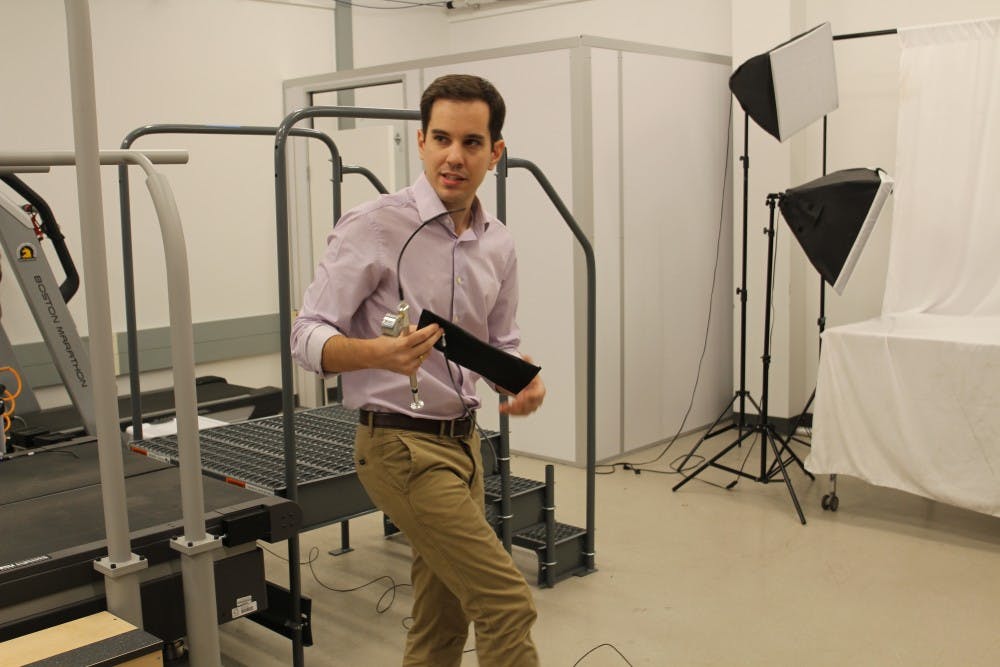Researchers on ASU’s Polytechnic campus are developing devices like prosthetic limbs designed to help hospital patients as they recover.
Through what Bio-Inspired Mechatronics Lab director and professor for ASU's Ira A. Fulton Schools of Engineering, Panos Polygerinos referred to as soft robotics, researchers hope to help hospital patients regain physical functions they might have lost.
“My lab is dealing with this new sub-field of robotics that is looking at robots from a different perspective,” Polygerinos said. “Instead of using rigid and hard components the way we all used to, we’re using more flexible materials.”
While the lab is using soft robotics for multiple experiments, including a soft grasper device that could suck up water in canals for testing purposes, one of the lab’s major projects is to make a knee-based exoskeleton that could help patients walk again.
"The idea is that we want to assist users regain function and be able to walk again after a stroke,” Polygerinos said. “They cannot walk normally, so they need some assistance on their knee to extend their leg. What we’re developing is soft inflatable actuators. They’re soft and compliant, but when you pressurize them with air, what happens is it gets some stiffness.”
These actuators stiffen and loosen behind the user’s knee, which could help with walking motions.
To develop the exoskeleton, the Polytechnic researchers took a multi-lab approach. The Robotics and Intelligent Systems Laboratory, which conducts research developing robots that can interact with each other, worked with the mechatronics lab for the design.
Wenlong Zhang, director of the RISE lab, said that when designing the exoskeleton, the researchers need to consider how to make a system that can run with more efficiency than traditional rehabilitation.
“Our goal is to design nice control and learning algorithms,” Zhang said. “Right now, if you go to a rehabilitation clinic, what you're going to see is that physical therapists will move a patient’s leg manually, which is very labor intensive and sometimes not very efficient.”
To develop the exoskeleton, Zhang said the biggest issue the researchers faced was creating a system that could work with gait irregularities, which would vary from patient to patient. Since no two patients have the same irregularity, the system is a bit more complex.
“The main challenge here is that for these patients (with gait problems), their walking patterns are very different from ours,” Zhang said. “We need sensors to measure their gait issues, and based on those real time measurements, we design a feedback control learning and planning algorithm so we know given a specific patient, we can make a very customized personal assistant.”
When applied to users, sensors are attached at the heels of their shoes, and as they walk, the exoskeleton adjusts.
Beyond helping patients walk, the researchers are also developing robotic systems for people who can no longer grip. To help these patients, the mechatronics lab is using soft robotics to develop a prosthetic arm. Green, blue and tubular, the tentacle-like appendage can help patients with basic tasks.
“What can you do with an additional arm?” Pham Huy Nguyen, a doctoral systems engineering student who works in the mechatronics lab, said as he demonstrated how the artificial limb moves. “Some of these people don’t have the same grasping capabilities anymore, so we want to help them do simple tasks like pick up a cup or help them with feeding or open a door.”
Reach the reporter at Emmillma@asu.edu or follow @Millmania1 on Twitter.
Like The State Press on Facebook and follow @statepress on Twitter.




